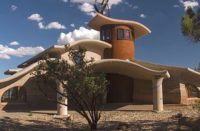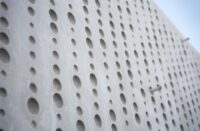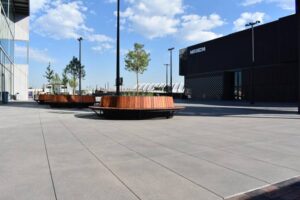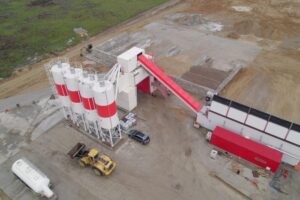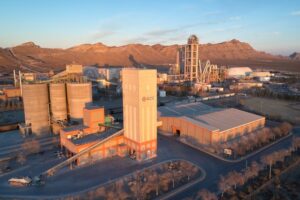
Just a few short years ago, saying that concrete was a green building material was sufficient. It was taken for granted that concrete, being locally produced, durable and nontoxic, was a sound, sustainable choice. Today, it is not enough to repeat the word “green” like a mantra. Whether they are green-skeptics or advocates, consumers and architects are becoming better educated and more concerned about environmental impact, and they want substance.
The next step is to improve our green accountability as an industry, even beyond talking about LEED points. As an industry we have to increase transparency by providing more details and disclosure. It may sound like extra work, but when we use the facts we can win on the issue of “eco-value.”
Documenting any green claims is vital. There is no doubt that litigation and government regulation of green criteria affecting our industry are looming issues. The Construction Specifications Institute has been offering courses to advise specification writers and their employers about the risks of promising sustainability and energy efficiency, but not delivering it.
Generalizations must be replaced by specifics. For instance, “recycled content” is a very broad umbrella term open to misinterpretation and the design and building community won’t accept lack of further information. Savvy buyers are asking to know the exact percentage of any materials we use, broken out as preconsumer, post-consumer or post-industrial. Are manufacturers you choose delivering a consistent product and providing this information?
Even though not all customers will require it, you can demonstrate green thinking when you make it standard practice to point out the exact low-VOC content of surface-applied liquids, such as sealers, curing compounds and other treatments, used on a job. Products are available that meet and exceed local requirements, and it is easy to find specifics in MSDS documents to show your customers that you are committed to being an environmentally conscious company.
When you are ordering ready-mixed concrete for new construction, have you been asked to have your supplier document and certify the amount and type of recycled content and local materials used? Often architects ask for this for LEED projects. Examples of recommended documents are supplied in the appendix of the Ready Mixed Concrete Industry LEED Reference Guide, prepared by the RMC Research & Education Foundation. This report provides a good benchmark of standard procedures in the ready-mix concrete industry.
Do you document the procedures that you use to manage construction waste? That is required on jobs that either will be submitted for LEED certification or are said to adhere to LEED criteria. Shouldn’t that be done even when you aren’t involved in LEED projects? It shows your company uses environmentally sound procedures for reuse and recycling, giving you an excellent selling point. It might even make the difference in a competitive bid, allowing you to demonstrate you are greener than the competition.
If you want to increase green demand for all types of decorative concrete, it’s important to quantify its eco-value to the building owner or building operator, whether you are doing a big commercial project or a smaller personal residence.
As a good example of how to promote green benefits, examine the reasons why polished concrete has become a phenomenal top seller in these challenging financial times. Manufacturers and installers used the hard facts and cost comparisons as market drivers. First, the lower installed cost of polished concrete compared to alternative materials is a selling point. Second, the higher potential replacement cost of other materials over the floor’s life span can be spelled out in dollars and cents. Third, there are the benefits for building owners and operators of eliminating toxic cleaning materials and reducing maintenance time and expenses. These three key benefits create eco-value.
Architects designing buildings that would apply for LEED certification have influenced the increasing demand for polished concrete, but more and more non-LEED projects employ polished concrete, too. The strong message trickled down, and demand increased for polished concrete in homes, schools and office buildings that won’t ever spend the money to apply under LEED. We see an increasing number of projects that just have a goal to be considered environmentally responsible.
A strategy focusing on eco-value and key market drivers can increase demand for other decorative concrete methods, too. To be more direct, you can stop selling against each other and start selling against the costs and benefits of other types of material alternatives that are less durable, more expensive to maintain, wear out more frequently and have to be replaced. When you think about it, bamboo floors don’t perform so well when compared to concrete or cementitious toppings. In the present economic situation, almost any materials in the decorative concrete field can win on long-term value comparisons. Instead of seeing LEED criteria as an end point, why not look at these criteria as a starting point for developing a sales strategy applicable to the wider market? Yes, the U.S. Green Building Council LEED program has set new standards that decorative concrete contractors must understand. But don’t dismiss the follow-on effect on the whole building industry.
Anyone in your firm who has contact with your customers would benefit from more education on the vocabulary of sustainability and green building. Consumers are reading up on the topic and have probing questions. Designers, builders and architects are experts in the vocabulary promoted by the USGBC and other groups. Vague answers to their questions will only make us look like we are engaged in “greenwashing.” We offer a truly sustainable solution. Can you get specific? Are you keeping up?
Ultimately, I believe that the concrete industry and the dimension that decorative concrete offers will play a major role in determining the success of green building initiatives and sustainability efforts. So many low-energy building designs use high-thermal-mass concrete floors and walls in structural design. We have to reach beyond the focus on LEED points to address the larger need for improving, repairing, renovating and maintaining this vast amount of concrete in the built environment. In green building criteria, when life-cycle cost is seen as important, concrete will outperform alternatives. The larger topic of eco-value is the next hot topic beyond green, and decorative concrete can prove its worth.
In February 2012 the Concrete Decor Show will offer courses to demystify the topic of sustainability and show how the decorative concrete industry can think green, talk green and be more sustainable in both building practices and competitive analysis. Demand for environmentally sound solutions is increasing, and this is the time to dig deeper and understand the eco-value of concrete.
